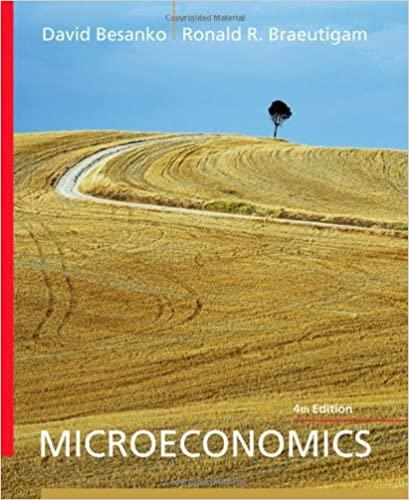10.17. Suppose the market for corn in Pulmonia is competitive. No imports and exports are possible. The...
Question:
10.17. Suppose the market for corn in Pulmonia is competitive. No imports and exports are possible. The demand curve is Qd " 10 ! Pd
, where, Qd is the quantity demanded (in millions of bushels) when the price consumers pay is Pd
. The supply curve is where Qs is the quantity supplied (in millions of bushels)
when the price producers receive is Ps
.
a) What are the equilibrium price and quantity?
b) At the equilibrium in part (a), what is consumer surplus? producer surplus? deadweight loss? Show all of these graphically.
c) Suppose the government imposes an excise tax of $2 per unit to raise government revenues. What will the new equilibrium quantity be? What price will buyers pay? What price will sellers receive?
d) At the equilibrium in part (c), what is consumer surplus? producer surplus? the impact on the government budget (here a positive number, the government tax receipts)? deadweight loss? Show all of these graphically.
e) Suppose the government has a change of heart about the importance of corn revenues to the happiness of the Pulmonian farmers. The tax is removed, and a subsidy of $1 per unit is granted to corn producers. What will the equilibrium quantity be? What price will the buyer pay? What amount (including the subsidy) will corn farmers receive?
f ) At the equilibrium in part (e), what is consumer surplus?
producer surplus? What will be the total cost to the government? deadweight loss? Show all of these graphically.
g) Verify that for your answers to parts (b), (d), and
(f ) the following sum is always the same: consumer surplus # producer surplus # budgetary impact # deadweight loss. Why is the sum equal in all three cases?
Step by Step Answer:







